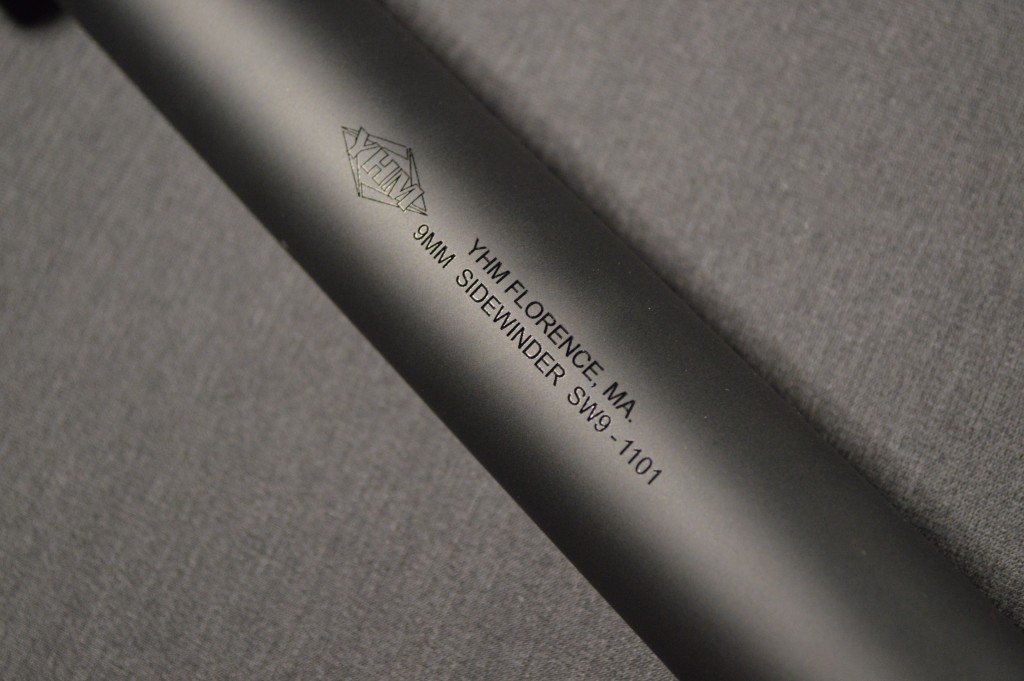ATF Introduces Proposal 29P to Regulate Suppressor Markings
May 3, 2016As has become all too common, gun owners continue to (figuratively) poke the ATF bear. Thanks to more unnecessary alarmism and meddling from the National Firearms Act Trade and Collectors Association (NFATCA, the insufferable folks responsible for ATF 41F), the ATF is now considering changes to the marking requirements for suppressors.
Dubbed ATF 29P, the proposal as drafted would require manufacturers to stamp or engrave serial numbers and other necessary markings on the outer tube of each silencer. Though marking the tube is effectively the industry standard at this point, there are exceptions where companies have chosen to engrave parts less likely to be damaged, such as booster/mount housings. The ATF wants the industry to officially standardize in a single location on each device.
Throughout the 29P publication, the ATF repeatedly refers to cases where a manufacturer could currently mark the end cap of a can. They say that not only is the end cap prone to damage, but serialized end caps also could be fitted to unregistered silencers to facilitate illicit transfers and suppressor trafficking. The agency’s first point is valid but lacks sufficient understanding of the ways suppressors fail. The ATF’s second assertion is pure fantasy.
The problem with requiring all manufacturers to mark the tube is that defining the part has become much less clear in recent years. Since the ATF has previously ruled that manufacturers may not replace damaged, serialized tubes, many companies have devised ways to isolate the serialized portion from the rest of the suppressor body. Rugged Suppressors’ Obsidian, for example, has markings engraved on its stainless steel booster housing – a part that can be separated from the can’s aluminum tube to repair catastrophic failures. Other manufacturers, like SIG Sauer, have completely abandoned suppressor tubes altogether. Lastly, several companies have recently released modular, two-piece suppressors where the tube is not a single part.
The above concerns don’t tell the whole story. The ATF asserts that damaged suppressor tubes are exceedingly rare occurrences. Yet sometimes, overcharged rounds rupture silencers’ bodies. Such failures aren’t common, but they happen frequently enough that manufacturers who try to isolate the serialized portion of the can should be commended.
As far as trafficking and illicit suppressors are concerned, the ATF is entirely off-base. Placing a legal, serialized end cap on an illegal/unregistered suppressor doesn’t suddenly make that silencer legal. This has long been the ATF’s position, and the agency’s claims that they could not prosecute such an action are simply bogus. No, the ATF can’t currently prosecute someone for marking an end cap, but the agency absolutely can charge a person who places an approved end cap on an unregistered silencer or who has spare suppressor parts laying around. It also isn’t clear how the ATF sees someone trafficking illegal suppressors using serialized, registered end caps.
Sadly, the location of suppressor markings would be a moot point were it not for the ATF’s unreasonable stance on repairing/replacing NFA-controlled items. Not only has the ATF held that damaged suppressor tubes could not be scrapped and replaced, the agency treats spare suppressor parts as separate silencers, meaning no end-user can own replacement parts for his/her silencers. This is consistent with the agency’s position on NFA firearm receivers, but the policy as a whole is a substantial departure from Title I firearm regulations. Silencers are wear items by their very nature, but the ATF treats them otherwise. Standardized placement of the required markings would be a trivial change for most silencer companies if the ATF would simply relax its policy on tube replacement for damaged cans.
The 90-day public comment period for ATF 29P is expected to open tomorrow. I will update this article as soon as the proposal hits the Federal Register, and readers can be certain that I will post a more formal response in the coming months.
Update 5/4/2016: ATF 29P has been posted to the Federal Register, and the public can now submit comments. The comment period ends on August 2, 2016. Link below.
Jeremy Mallette is co-founder of International Sportsman. An avid hunter and outdoorsman, he has spent more than a decade in the outdoor industry, from hiking and camping to silencers and hunting. His father taught him to shoot at age six, and he received his first firearm at age eight — a 1942 Colt Commando .38 special revolver. He enjoys yearly trips to Kansas for pheasant hunting, spending time with his children at the deer lease, and collecting unique firearms.
An information security professional by day and gun blogger by night, Nathan started his firearms journey at 16 years old as a collector of C&R rifles. These days, you’re likely to find him shooting something a bit more modern – and usually equipped with a suppressor – but his passion for firearms with military heritage has never waned. Over the last five years, Nathan has written about a variety of firearms topics, including Second Amendment politics and gun and gear reviews. When he isn’t shooting or writing, Nathan nerds out over computers, 3D printing, and Star Wars.

